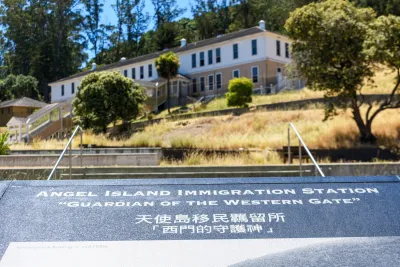How the America’s Most Endangered Places list helps bring important stories out of obscurity.

In a piece for Smithsonian Magazine, Shoshi Parks outlines how the National Trust for Historic Preservation’s America’s Most Endangered Historic Places program has helped activists restore neglected historical sites.
The program adds 11 new endangered sites to the list each year. The recognition can be crucial for sites, helping to raise their profile and access funding for restoration and programming. According to Jennifer Sandy, the senior director of preservation programs for the National Trust, “While designation on the 11 Most Endangered list does not come with dedicated funding, the high-profile nature of the designation does often help organizations attract new sources of funding through grants or philanthropy.”
Remembering and making connections to historical sites, especially those once rarely considered worthwhile by preservationists, lays a foundation for a future built on belonging and inclusion.
As Parks explains, “In its first years, the endangered list was dominated by sites that placed Euro-American history above those of Indigenous, ethnic and immigrant stories. More recently, the National Trust has taken an expanded perspective that tells the full American story, including places previously left at the margins or located outside the contiguous United States.”
FULL STORY: These Historic Sites in the U.S. Were Once Endangered. Now They’re Thriving

National Parks Layoffs Will Cause Communities to Lose Billions
Thousands of essential park workers were laid off this week, just before the busy spring break season.

Retro-silient?: America’s First “Eco-burb,” The Woodlands Turns 50
A master-planned community north of Houston offers lessons on green infrastructure and resilient design, but falls short of its founder’s lofty affordability and walkability goals.

Delivering for America Plan Will Downgrade Mail Service in at Least 49.5 Percent of Zip Codes
Republican and Democrat lawmakers criticize the plan for its disproportionate negative impact on rural communities.

Test News Post 1
This is a summary

Test News Headline 46
Test for the image on the front page.

Balancing Bombs and Butterflies: How the National Guard Protects a Rare Species
The National Guard at Fort Indiantown Gap uses GIS technology and land management strategies to balance military training with conservation efforts, ensuring the survival of the rare eastern regal fritillary butterfly.
Urban Design for Planners 1: Software Tools
This six-course series explores essential urban design concepts using open source software and equips planners with the tools they need to participate fully in the urban design process.
Planning for Universal Design
Learn the tools for implementing Universal Design in planning regulations.
EMC Planning Group, Inc.
Planetizen
Planetizen
Mpact (formerly Rail~Volution)
Great Falls Development Authority, Inc.
HUDs Office of Policy Development and Research
NYU Wagner Graduate School of Public Service



























